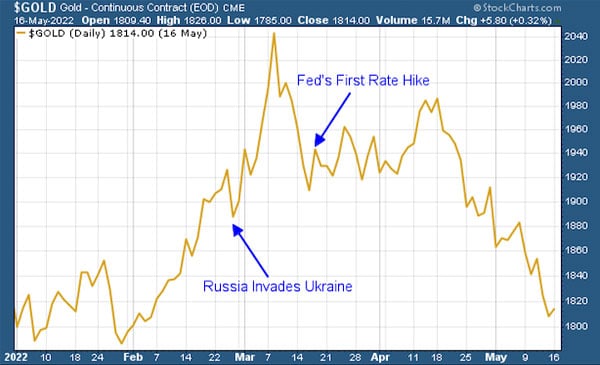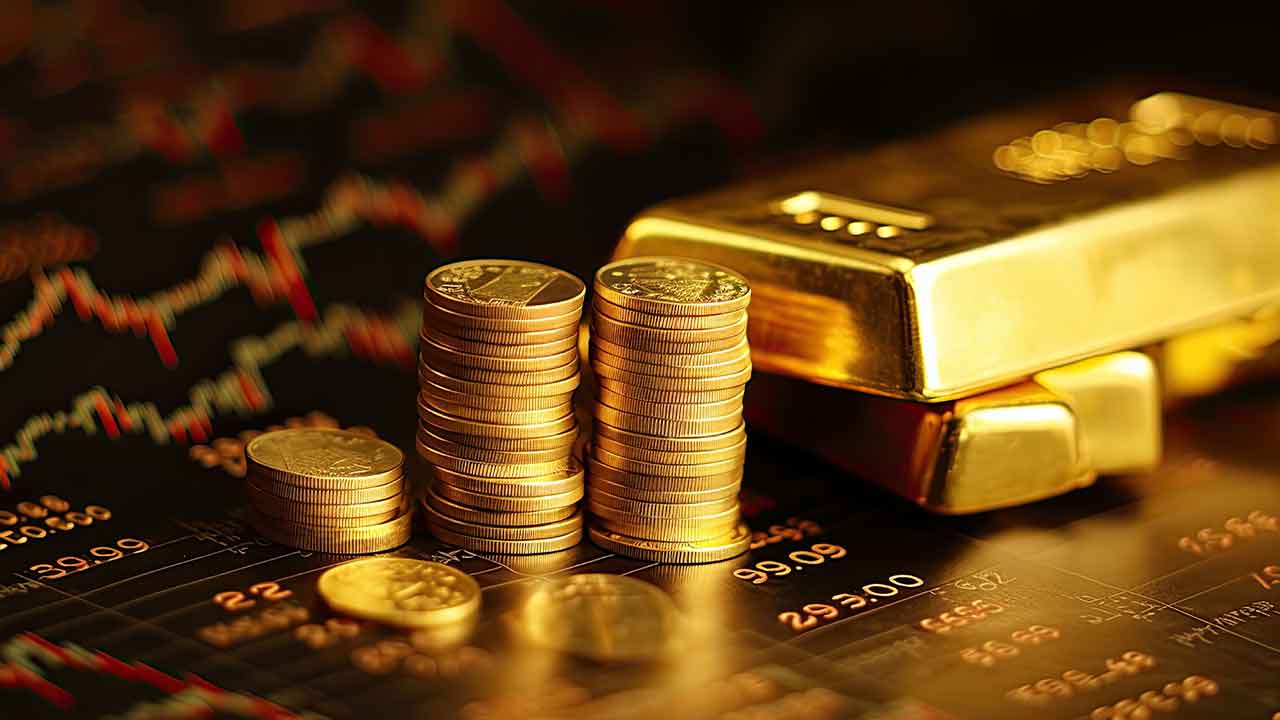Gold is taking off to the upside again, as investors rush to the supposed “safe haven” of the yellow metal and the speculators quickly cover their short bets.
Sometimes a good day for gold is a bad day for the world, and such is the case right now.
There’s no good reason why anyone should buy gold when violence breaks out somewhere in the world...even when the event is as horrendous and ripe for escalation as the Hamas attack on Israel.
The reason to own gold is because you believe the purchasing power of your currency is going to dive even more steeply, and that prospect simply doesn’t apply in this case.
So a gold rally in the wake of a geopolitical event is...usually...something to be avoided.
Today I want to explore how that truism applies today. Or perhaps doesn’t.
This Time Really Is Different
Early last year, as the Fed was readying for the initial rate hike in its campaign to stymie growing inflationary pressures, gold started to rally.
Gold often, in fact usually, rises during Fed rate hikes. That seems counterintuitive, but the record is clear on this.
For example, during gold’s legendary bull run of the 1970s, gold continued to rise because inflation was rising more quickly than the Fed could raise rates. Finally, Volcker was able to kill off inflation by drastically hiking rates above 20%.
Now, back to early last year.
As you can see from the chart below, gold began to rise in January of last year as Fed rhetoric started to point toward an imminent rate-hike campaign. Notably, the gold price ran for at least a couple of weeks before the potential of a Russian invasion emerged.

Note that, after the gold price had risen for about a month, Russia actually did invade, and this briefly turbocharged the gold rally.
Then, after World War III failed to emerge, the crisis moved from the front page and, as usual, the gold price declined after the initial panic subsided.
In effect, this geopolitical crisis overwhelmed the drivers that were already in play. And the price downtrend it created as the initial fears passed led to an extenuated bear market as the Fed relentlessly raised rates over the next 18 months.
Fast forward to today, and we see that gold was dramatically oversold as the crisis in Israel unfolded, and in fact seemed to have bottomed on Friday, the day before the attack began.
Yes, there is the risk that the gold price will fall if and when the tensions in the Mideast subside or there is some resolution after Israel invades Gaza.
But we’re in a much different macroeconomic environment today, as compared against early 2022.
Today, the U.S. economy is straining under the burden of what may be the harshest tightening cycle ever enacted by the Fed. Bankruptcies are surging, and the lagging effects of the rate hikes are yet to be felt.
Even before the violence erupted, this rate-hike cycle had essentially peaked. So whenever these troubles begin to fade away, we will either be in or approaching the downside of the cycle.
These forces will be far too powerful for the easing of geopolitical tensions to overcome. This rally will not be killed off.

About the Author:
Brien Lundin is the publisher and editor of Gold Newsletter, the publication that has been the cornerstone of precious metals advisories since 1971. Mr. Lundin covers not only resource stocks but also the entire world of investing. He also hosts the annual New Orleans Investment Conference. To get Brien Lundin’s ongoing commentary on the markets at no charge, click here to subscribe to his free Golden Opportunities newsletter.






